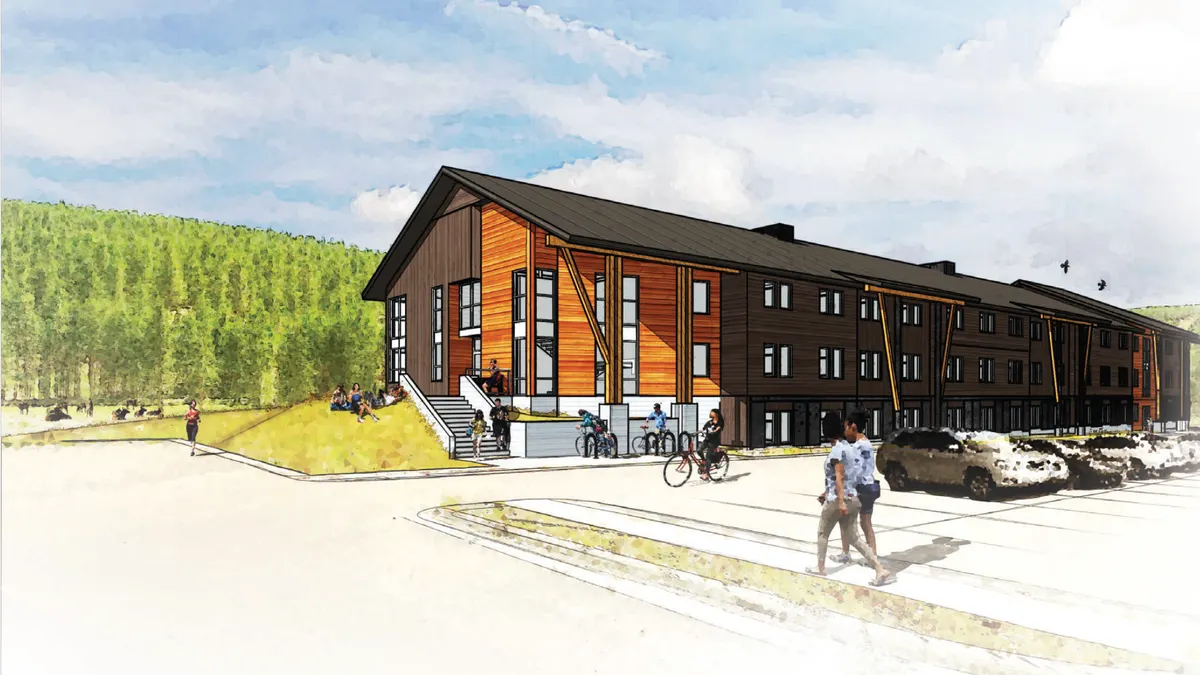Essex Property Trust beat its core funds from operation per-share guidance in the second quarter due to higher than expected same-property revenues, including stronger net effective rent growth.
In Q2, the Palo Alto, California-based REIT posted year-over-year gains in same-property revenue and net operating income of 3.4% and 3.0%. On the REIT's Q2 earnings call earlier this month, CEO Angela Kleiman credited strong demand drivers in Essex’s West Coast markets.
“Ultimately, we're seeing pricing power, and that's translating to our outperformance,” Kleiman said. “You’ve seen us raise guidance twice and that is primarily driven by demand. We've always maintained that having that low-supply environment puts us in a really good position here.”
Essex expects same-property net operating income to grow by 2.3% at the midpoint, representing a 90-basis-point improvement to its prior guidance and a 170-basis-point improvement from its initial outlook. However, higher utility costs and legal fees led it to raise same-property operating expenses by 50 basis points to 4.75% at the midpoint.
“For the year, we expect controllable expenses to increase less than 3% in total,” CFO Barb Pak said on the call.
Here are three takeaways from Essex’s earnings report and call:
West Coast rental rebound coming
A lot has been written about the struggles of cities like San Francisco and Seattle after COVID-19 hit in 2020 and many workers left for more affordable locales. However, Kleiman came to Essex’s Q2 earnings call armed with lots of data supporting a West Coast resurgence.
In June, the top 20 technology companies in Essex’s markets totaled over 17,000 jobs, a 150% increase from 2023. “While we have yet to return to the historical average of 25,000 jobs, the steady improvement so far has generated incremental demand in our markets and is a good precursor of the recovery, particularly in Northern California and Seattle,” Kleiman said.
Essex’s CEO also cited data from market intelligence firm Placer.ai showing that workers are relocating back to the coastal offices, generating a shadow demand. “Additionally, this year, Northern California has positive net domestic migration for the first time since pre-COVID,” Kleiman said.
As workers return to the Bay Area, homeownership remains challenging. “It is 2.8 times more expensive to own than to rent in our markets today, compared to 1.7 times back in 2019 when interest rates were near the historical low,” Kleiman said. “Even if mortgage rates were to revert back to the 2019 level, homeownership in our markets will still remain significantly less affordable than renting.”
Seattle leads the way
Essex posted a same-store blended rent rate growth of 3.4%, compared to the 2.2% year-over-year growth achieved in Q1 2024. “We now forecast blended rent growth to be 120 basis points higher than our initial forecast, driven by outperformance in Northern California and Seattle,” Pak said.
Kleiman said that blended rent growth would have hit 4.5% without Los Angeles and Alameda — two counties in California still dealing with elevated delinquency-related turnover.
BY THE NUMBERS
| Category | Q2 | YOY Change |
| Revenue | $414.8 million | 3.4% |
| Net operating income | $293.4 million | 3.0% |
| Operating expenses | $76.5 million | 4.5% |
| Funds from operations | $3.89 | 0.5% |
| Average rent | $2,649 | 1.8% |
| Occupancy rate | 96.2% | -40 bps |
SOURCE: Essex
Seattle has been the REIT’s best-performing market, achieving 4.9% blended rent growth while maintaining 97% occupancy in Q2. Northern California was its second-best-performing region, with 3.3% blended rent growth in Q2 and an occupancy of 96.3%. Despite issues in Los Angeles County, Southern California had 2.8% blended rent growth and occupancy of 95.7%.
“Our portfolio is well positioned, with an average concession of less than two days, and occupancy is healthy at 96.2%,” Kleiman said. “We are prepared to shift to an occupancy strategy as appropriate while maintaining the option to minimize rental growth.”
Transactions pick up
Investor demand for West Coast apartments returned in a big way in Q2, but the number of properties on the market remained low, according to Kleiman. “This combination has resulted in a highly competitive bidding process and a compression in cap rates in some markets,” she said.
Essex was busy in Q2. It assumed the common equity interest in a 75-unit property in Sunnyvale, California. In May, the REIT acquired ARLO Mountain View, a 164-unit property in Mountain View, California, for $101.1 million. The property, built in 2018, includes 10,725 square feet of fully leased retail space.
After Q2 ended, Essex acquired its joint venture partner’s 49.9% common equity interest in the 269-unit Patina at Midtown in San Jose, California. It paid $117 million for the apartment community, built in 2021.
“All three of these investments have significant upside potential based on the favorable fundamental backdrop and efficiency of our operating platform,” Kleiman said. “We are pleased with the progress to date, with over $500 million in acquisitions closed, and are optimistic that more opportunities will arise in the near future.”
Click here to sign up to receive multifamily and apartment news like this article in your inbox every weekday.





































